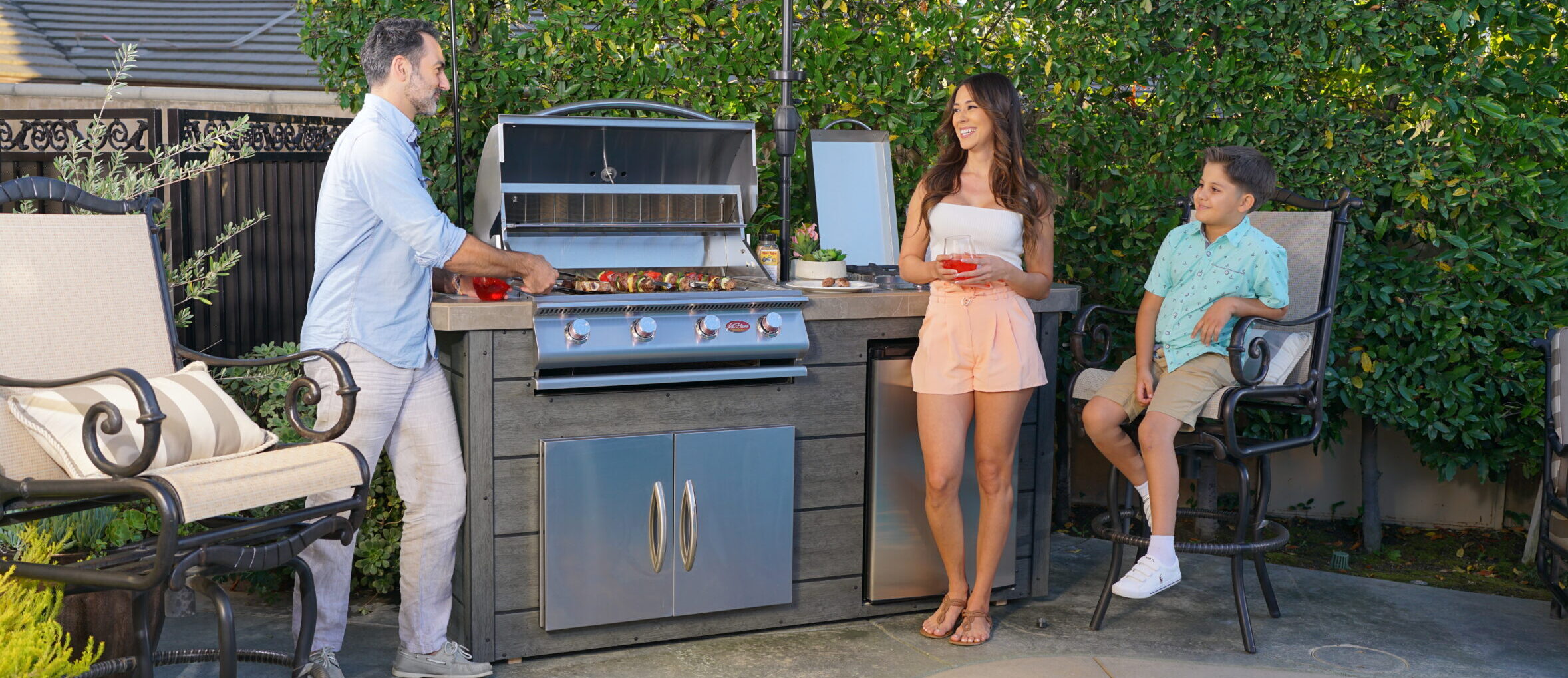Kamado Smoker Grilling
There isn’t much difference in cooking with a Kamado than with a traditional grill, however it is something you must accustom to before feeling comfortable. Kamados are capable of holding low temperatures for extended periods of time, which is excellent for slow cooking, which might cause a learning curve. Kamado smoker grills also provide the flexibility to achieve a variety of cooking styles, it’s up to the grill master to choose 
Kamados naturally produce a natural convection effect, perfect for grilling and even baking, although it may take a little longer to enjoy your barbecue food, the end result will be well worth the wait. With that being said, here is my favorite brisket recipe you could use to your advantage on your kamado thanks to www.bbqguys.com.
SMOKED BRISKET
INGREDIENTS
- 5-7 lb. beef brisket
- 3-4 cups wood chunks or chips
- 1/4 cup extra virgin olive oil
- 1 T. dried rosemary
- 2 T. garlic powder
- 2 T. turbinado sugar
- 2 T. paprika
- 2 T. cayenne pepper
- 1 T. dried oregano
- 1 T. dried thyme
- 2 T. kosher salt
- 2 T. fresh cracked black pepper
DIRECTIONS
- After trimming the fat layer down on the brisket to about 1/4 inch and removing any large membranes or “silverskin”, rub generously with olive oil and rub in your spice blend with the backs of your hands (this is more fun than it sounds).
- Next double wrap your brisket tightly with plastic wrap and place in the refrigerator for at least 2 hours, but preferably over night.
- While waiting, soak your wood chips and set up your grill or smoker for indirect cooking.
- When ready, remove brisket from refrigerator and place straight on a 225°F degree grill, fat side down.
- If spraying your brisket, blend the apple cider and apple cider vinegar in a spray bottle and spritz every 2-3 hours.
- Your brisket will take between 1 1/4 – 2 hours per pound, depending on many different factors. With that said, insert an internal temperature probe into the thickest section of meat on your brisket at around 1 1/4 hours per pound of actual cooking time and begin to monitor.
- When your brisket reaches an internal temperature of 180°F, remove and double wrap with heavy duty aluminum foil; followed by wrapping tightly with a clean towel or newspaper.
- Now place the whole package inside of a cooler. When the internal temperature reaches 190°F, you are ready to un-wrap one of the best tasting cuts of beef you have ever had.
For more information about Cal Flame BBQ products and services, please visit www.CalFlameBBQ.com
